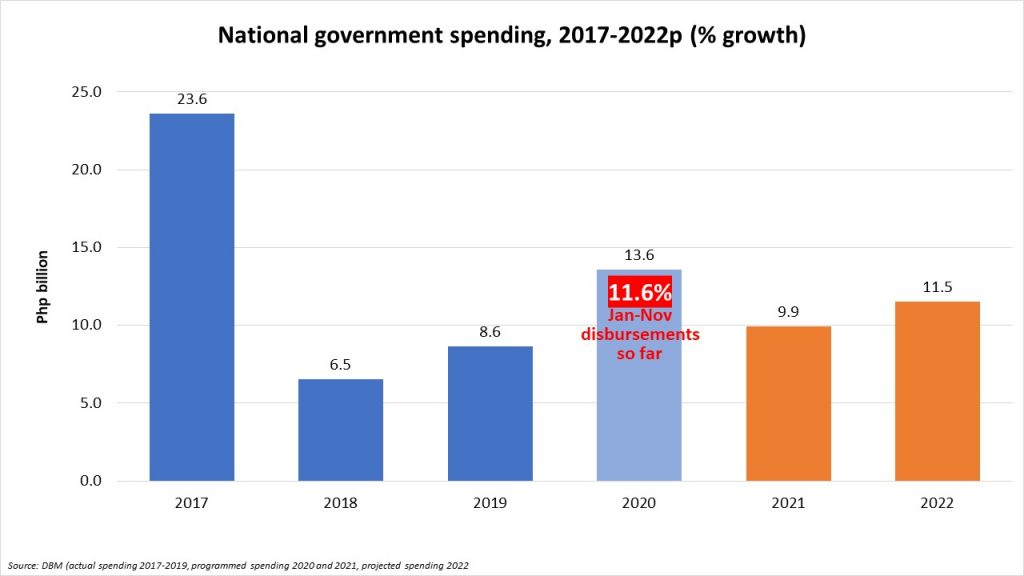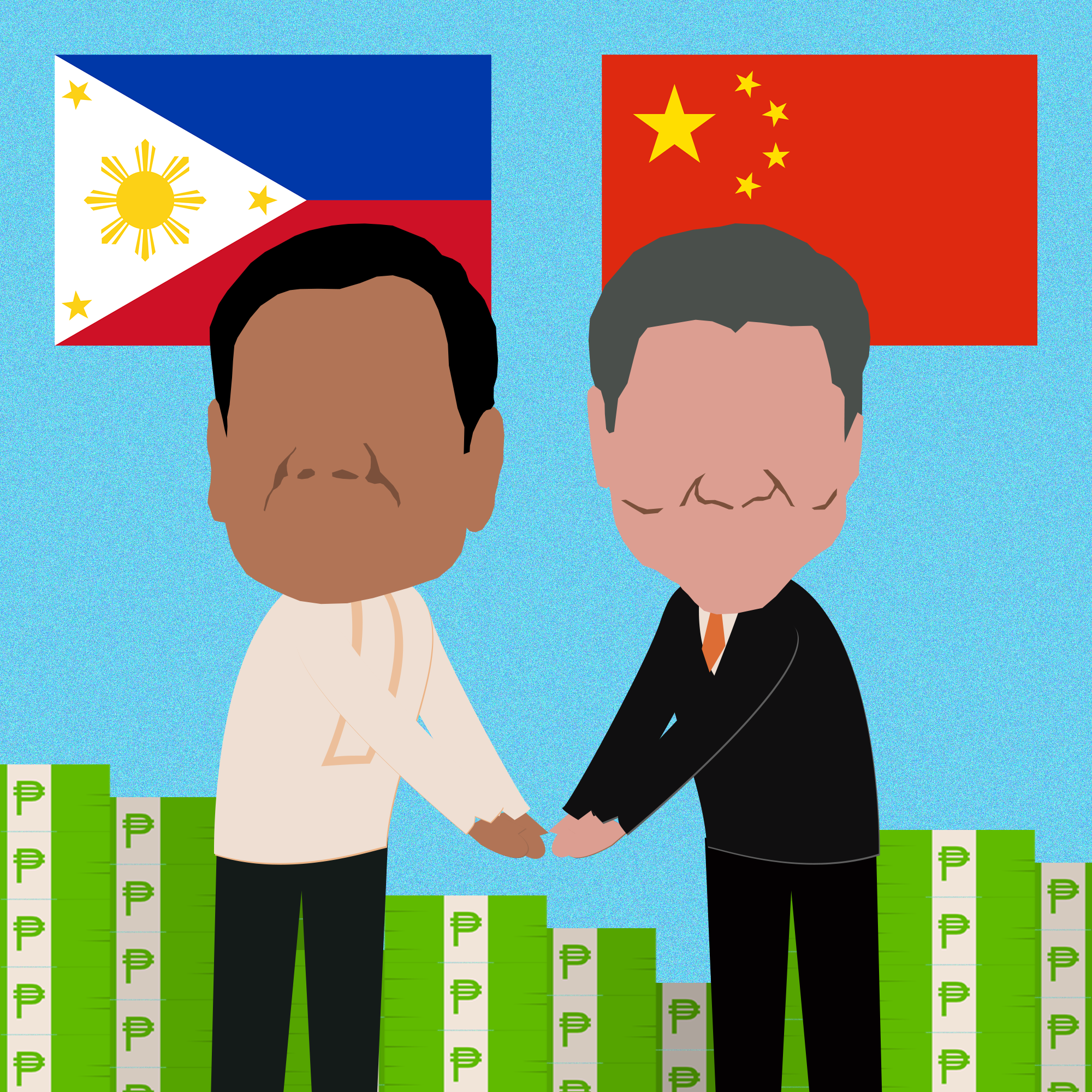If you bothered to start to read this then you probably know by now that the 9.5% contraction of the Philippine economy last year was the worst on record – which is to say since the end of World War II which is only when gross domestic product (GDP) started to be estimated for the country.

The government blames the bad economic performance on the pandemic. Well, COVID-19 certainly was a problem for the country.
In September last year, the well-respected Lancet medical journal reported to the United Nations 75th General Assembly that the Philippines ranked 65th out of 91 countries worldwide in terms of COVID-19 response. We were already the worst performer in Southeast Asia then.
The Lowy Institute came out with a similar study last month. In the chart showing the Philippines and a few of our Southeast Asian neighbors, a higher line means better performance in dealing with COVID-19 as the weeks go by. The Communist Party-led Socialist Republic of Vietnam was a star performer from the very beginning.

The Philippines fared even worse in the Lowy Institute study and placed 79th out of 98 countries worldwide. The only countries that ranked lower in Asia were Bangladesh (84th), Indonesia (85th), and India (86th). Perhaps not coincidentally, what the four worst performing countries in Asia have in common is that the pandemic hit as they all struggled with authoritarian leaders and democratic decline.
Effective public health response is the most important starting point of good COVID-19 response without which other measures wouldn’t get much traction. But the economic response is also very important.
Unfortunately the Philippines lagged badly even here and, measured as share of gross domestic product (GDP), had among the smallest fiscal response in the region. The poor public health response combined with the trifling fiscal response to result in the Philippines having the worst economic performance in the region.

And is actually set to have the worst performance not just in the region but to as far away as South Asia and across East Asia.

The Duterte administration insists that it was a choice between health and the economy, kalusugan or kabuhayan, and portrayed itself as having agonized but made the difficult choice to prioritize health. The economic collapse was the price to pay, it said.
But that is a false choice – both could have been attended to well as the experience of the likes of Vietnam and Thailand have shown.
And it’s also not really the choice the administration made. In terms of COVID -19 response, the choice they made was the militarist one to treat the people as the enemy and rely on harsh lockdowns and long community quarantines. And also the choice to prioritize creditworthiness over spending to contain the pandemic and to ease the suffering of tens of millions of Filipinos.
The Duterte government chose not to spend. In the first 11 months of 2020, it only spent Php3.69 trillion which is just an 11.6% increase from the same period in 2020. Unless government spending picks up substantially in December, the last month of the year, this means that it even underspent its 2020 budget which is supposed to be as much as 13.6% more than the 2019 budget.

The historical annual average increase of budgets for the last four decades is 11.1% so the government can’t claim that there’s any stimulus happening.
And so the economy’s unprecedented collapse – because the pandemic was not contained and then because the government did not spend to stimulate it.
Hotels and restaurants, transport and storage, and construction were hit especially bad. Investments and foreign trade as well.

The biggest job losses were in hotels and restaurants, transport and storage, and manufacturing.
Agricultural employment increased – maybe partly because so much of farming and fishing is physically-distanced already, and maybe partly because retrenched and laid-off workers thought to find work there instead. Somewhat surprisingly, employment in education rose.

The drop in employment was unparalleled. In April 2020, at the height of the government’s lockdown, the number of employed suddenly fell to 33.8 million which was as low as a dozen years before in 2008.

For the whole year 2020, the official number of unemployed doubled from 2.3 million in 2019 to 4.5 million in 2020. But this is likely underestimated in using a new methodology that stopped counting millions of jobless Filipinos since the mid-2000s.
To get a sense of what the real number of unemployed might be – in 2019, IBON approximated the previous methodology and found that only half of unemployed according to the previous definition were still being counted. So the real number of unemployed today might be as much as double officially reported.

In short, there’s a huge social crisis with millions of unemployed, poverty increasing, and hunger worsening.
Yet the Duterte administration seems oblivious and COVID-19-related emergency cash assistance, or ayuda, has dwindled to almost nothing this year – while corporations (especially large and foreign firms) are being given Php133 billion in corporate income tax cuts.

Meanwhile, hundreds of thousands of distressed micro, small and medium enterprises (MSMEs) are getting scant support. Various surveys by the International Trade Center (ITC), Department of Labor and Employment (DOLE), United Nations Development Program (UNDP) and World Bank reported as much as 10-15% of businesses expecting to close permanently.
Yet, according to the president’s reports to Congress, Bayanihan 1 and Bayanihan 2 have extended financing support to less than 28,000 by the end of last year.

The government’s preferred approach of using monetary and financial policy to stimulate the economy simply isn’t working. Despite hundreds of billions of pesos in liquidity poured into the economy and interest rates down to record lows, businesses aren’t borrowing – with loan growth even contracting for the first time in 14 years.
This is most of all because so many ordinary Filipinos with no work and no incomes just don’t have enough money to spend so businesses have no reason to stay in or expand their businesses.

Now it’s true that the government is grappling with record budget deficits…

… and with record debt.

The problems are huge but the equally huge solutions are well within the capacity of the government to implement if it so wanted. The Philippines needs a much more ambitious COVID-19 economic response than the Duterte administration’s current business-as-usual approach.
In broad strokes, the Duterte administration has to take much more decisive measures to contain the pandemic such as by: tracing better, more judicious quarantines, and more rapid isolation; giving more emergency cash subsidies and support to MSMEs; and actually starting on long-term reforms to strengthen domestic agriculture and build national industry.
Most of all, it has to respond in a much more rational and humane manner. Too many Filipinos and their families are suffering from the government’s inaction, and too many small businesses are distressed from being left behind.
IBON takes up the economy’s problems in more detail and outlines possible solutions more concretely in our forthcoming Birdtalk paper. Please have a look at it! ###






